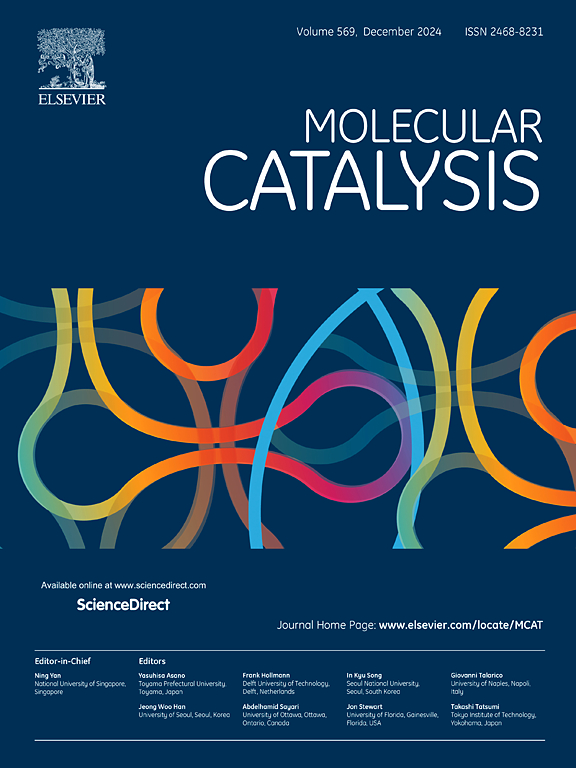Ethylene glycol partial oxidation on Co3O4 (001) surface: Interplay between solute’s surface coverage and aqueous solvation
IF 3.9
2区 化学
Q2 CHEMISTRY, PHYSICAL
引用次数: 0
Abstract
Using ab initio molecular dynamics simulations, we investigate the coverage dependent adsorption and decomposition of ethylene glycol (Egly), from the low coverage regime to surface saturation (0.13 ML to 0.44 ML) on the B-terminated Co3O4 (001) surface in dry and humid environments. We have analyzed the structure of Egly at the interface and identified the most probable binding mode and conformations. In dry conditions, Egly binds to the surface mostly via a bidendate mode and in a gauche conformation. Only single deprotonation events occur, leading to the formation of OHCH2CH2O species. A neutral aqueous solvent barely alters the situation. In the presence of a hydroxyl-rich aqueous solvent, OHCH2CH2O intermediates further decompose to form glycolaldehyde, which evolves to acetate and coexist together with OHCH2CH2O and OCH2CH2O species. This behavior holds from low coverage to half-saturation of the surface (up to 0.25 ML). Higher Egly population hinders oxidation and only hydrogen peroxide forms in favorable cases. Our work provides insight into the complex interplay between key factors governing the two-electron oxidation: the role of solvation, the relevant solute’s concentration range, the size of the active surface regions as well as the chemical state of interfacial water and its competition with Egly.
求助全文
约1分钟内获得全文
求助全文
来源期刊

Molecular Catalysis
Chemical Engineering-Process Chemistry and Technology
CiteScore
6.90
自引率
10.90%
发文量
700
审稿时长
40 days
期刊介绍:
Molecular Catalysis publishes full papers that are original, rigorous, and scholarly contributions examining the molecular and atomic aspects of catalytic activation and reaction mechanisms. The fields covered are:
Heterogeneous catalysis including immobilized molecular catalysts
Homogeneous catalysis including organocatalysis, organometallic catalysis and biocatalysis
Photo- and electrochemistry
Theoretical aspects of catalysis analyzed by computational methods
 求助内容:
求助内容: 应助结果提醒方式:
应助结果提醒方式:


